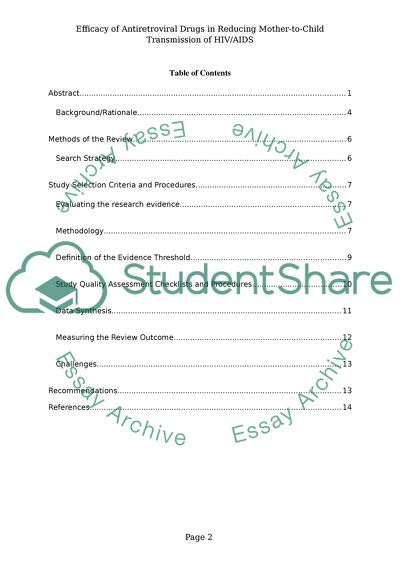Cite this document
(“SUMMATIVE ASSIGNMENT PROTOCOL FOR A SYSTEMATIC REVIEW -HIV/Aids Essay”, n.d.)
SUMMATIVE ASSIGNMENT PROTOCOL FOR A SYSTEMATIC REVIEW -HIV/Aids Essay. Retrieved from https://studentshare.org/health-sciences-medicine/1612711-summative-assignment-protocol-for-a-systematic-review-hivaids-prevention-policy-in-subsaharan-africazambia
SUMMATIVE ASSIGNMENT PROTOCOL FOR A SYSTEMATIC REVIEW -HIV/Aids Essay. Retrieved from https://studentshare.org/health-sciences-medicine/1612711-summative-assignment-protocol-for-a-systematic-review-hivaids-prevention-policy-in-subsaharan-africazambia
(SUMMATIVE ASSIGNMENT PROTOCOL FOR A SYSTEMATIC REVIEW -HIV/Aids Essay)
SUMMATIVE ASSIGNMENT PROTOCOL FOR A SYSTEMATIC REVIEW -HIV/Aids Essay. https://studentshare.org/health-sciences-medicine/1612711-summative-assignment-protocol-for-a-systematic-review-hivaids-prevention-policy-in-subsaharan-africazambia.
SUMMATIVE ASSIGNMENT PROTOCOL FOR A SYSTEMATIC REVIEW -HIV/Aids Essay. https://studentshare.org/health-sciences-medicine/1612711-summative-assignment-protocol-for-a-systematic-review-hivaids-prevention-policy-in-subsaharan-africazambia.
“SUMMATIVE ASSIGNMENT PROTOCOL FOR A SYSTEMATIC REVIEW -HIV/Aids Essay”, n.d. https://studentshare.org/health-sciences-medicine/1612711-summative-assignment-protocol-for-a-systematic-review-hivaids-prevention-policy-in-subsaharan-africazambia.


